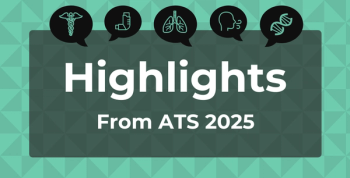
Patients Worldwide Are Treated With Inappropriate Care for Low Back Pain, Journal Says
Patients suffering from back pain worldwide are being treated with an overuse of inappropriate tests and treatments such as imaging, opioids and other medications, and surgery, instead of being educated about their condition and to stay active, a new series of papers in The Lancet reported.
Patients suffering from back pain worldwide are being treated with an overuse of inappropriate tests and treatments such as imaging, opioids and other medications, and surgery, instead of being educated about their condition and to stay active, a new series of papers in The Lancet reported.
As a result, resources are wasted as the condition is mistreated, often against best practice treatment guidelines, creating a practice and evidence gap causing an overuse of low-value care and underuse of high-value care, the papers said.
“Tremendous opportunity exists to improve healthcare outcomes and potentially reduce costs by effectively implementing known best practice recommendations,” the authors wrote.
Low back pain is the leading cause of disability worldwide, affecting an estimated 540 million people at any one time. Evidence suggests that primary care should be the main setting for caring for low back pain.
“The majority of cases of low back pain respond to simple physical and psychological therapies that keep people active and enable them to stay at work,” author Rachelle Buchbinder, MBBS, MSc, PhD, FRACP, FAHMS, of Australia's Monash University, said in a statement. “Often, however, it is more aggressive treatments of dubious benefit that are promoted and reimbursed.”
The
The global burden of disability due to low back pain has increased by more than 50% since 1990. It is due to increase even more in the coming decades as the population ages.
Low back pain mostly affects adults of working age. Rarely can a specific cause of low back pain be identified. Most is called non-specific. Evidence suggests that psychological and economic factors are important in the persistence of low back pain. Most episodes of low back pain are short-lasting with little or no consequence, but recurrent episodes are common.
Lifestyle factors—such as smoking, obesity, and low levels of physical activity—that relate to poorer general health are also associated with occurrence of low back pain.
Low back pain results in 2.6 million emergency department (ED) visits in the United States each year. A 2009 study found that opioids were prescribed to around 60% of ED visits for low back pain in the United States. Additionally, only about half of people with chronic back pain have been prescribed exercise.
“In many countries, painkillers that have limited positive effect are routinely prescribed for low back pain, with very little emphasis on interventions that are evidence based such as exercises. As lower-income countries respond to this rapidly rising cause of disability, it is critical that they avoid the waste that these misguided practices entail,” added author Nadine Foster, PhD, of the United Kingdom's Keele University.
The Global Burden of Disease study (2017) found that low back pain is the leading cause of disability in almost all high-income countries, as well as central Europe, eastern Europe, North Africa, and the Middle East, and parts of Latin America. Every year, a total of 3 million years of productive life is lost in the United States due to low back pain; 1 million years in the United Kingdom; and 300,000 in Australia.
The authors say that healthcare systems should avoid harmful and useless treatments by only offering treatments in public reimbursement packages if evidence shows that they are safe, effective, and cost-effective. They also highlight the need to address widespread misconceptions in the population and among health professionals about the causes, prognosis and effectiveness of different treatments for low back pain.
References
Hartvigsen J, Hancock MJ, Kongsted A, et al. What low back pain is and why we need to pay attention. Lancet. [Published online March 21, 2018]. http://dx.doi.org/10.1016/S0140-6736(18)30480-X 11
Foster NE, Anema JR, Cherkin D, et al. Prevention and treatment of low back pain: evidence, challenges, and promising directions. Lancet. [Published online March 21, 2018]. http://dx.doi.org/10.1016/ S0140-6736(18)30489-6
Newsletter
Stay ahead of policy, cost, and value—subscribe to AJMC for expert insights at the intersection of clinical care and health economics.








































